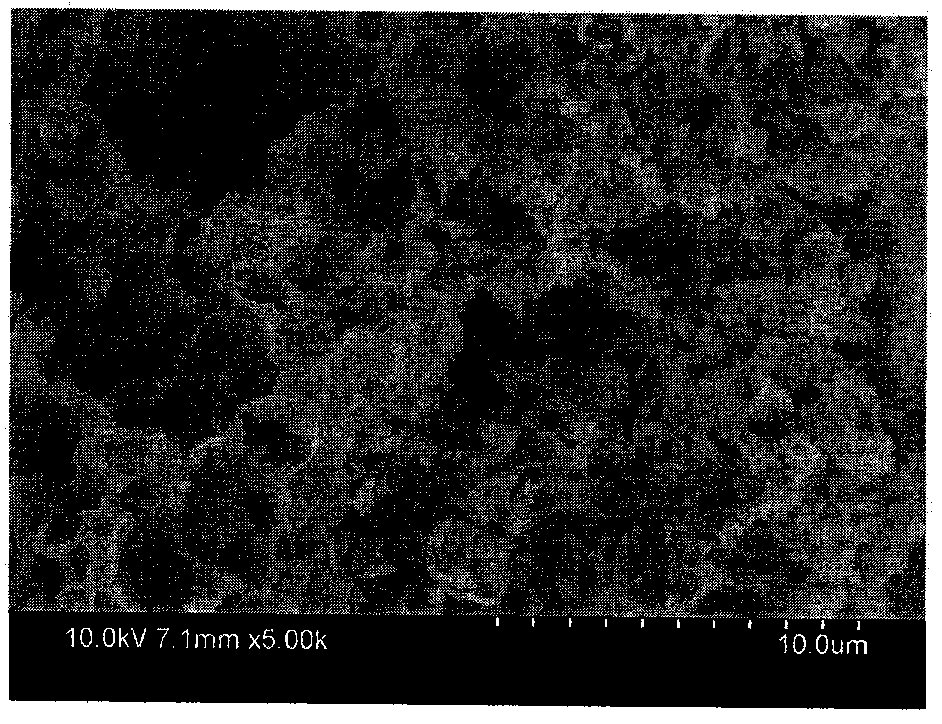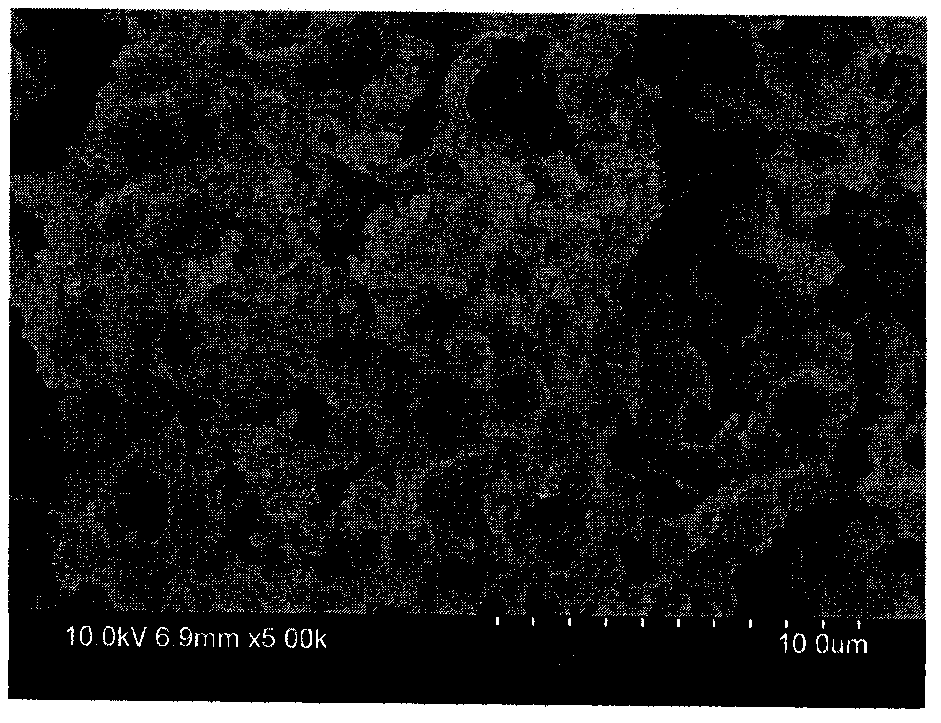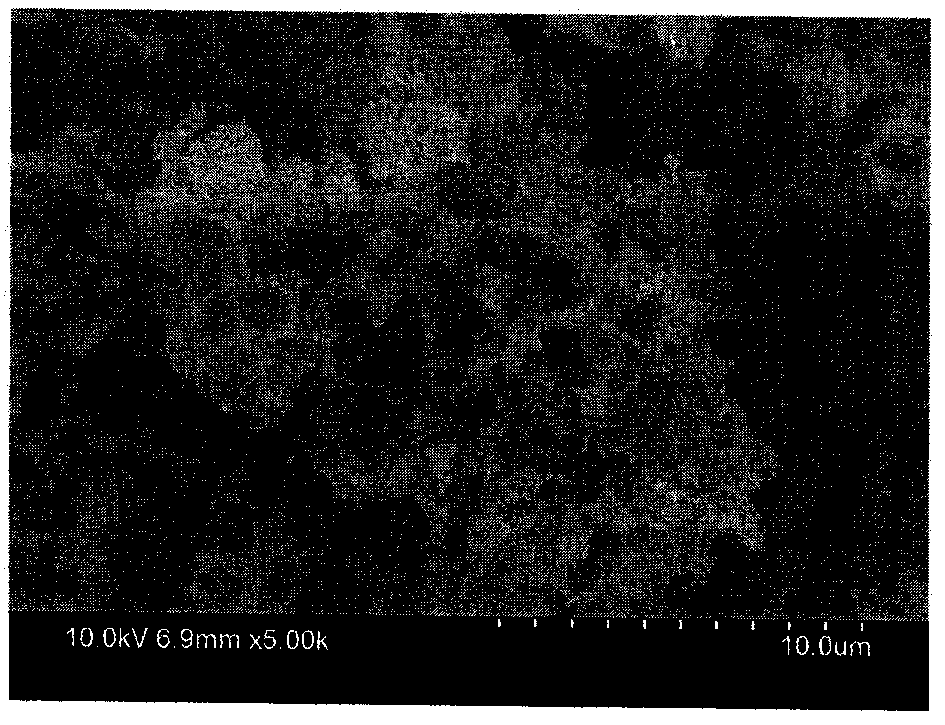Preparation method of high-specific energy porous silicon-carbon composite negative electrode material
A technology of carbon composite materials and negative electrode materials, applied in the field of preparation of high specific energy porous silicon carbon composite negative electrode materials, can solve the problems of material structure damage, high cost, low power density, etc.
- Summary
- Abstract
- Description
- Claims
- Application Information
AI Technical Summary
Problems solved by technology
Method used
Image
Examples
Embodiment 1
[0021] Disperse 0.1 gram of silicon powder in 0.1 liter of 0.05 mol / liter sodium carbonate aqueous solution, and slowly add the obtained suspension into 0.1 liter of 0.05 mol / liter calcium chloride aqueous solution under rapid stirring. Stirring was continued for 0.5 hours. The solid obtained in the above steps was washed with distilled water and ethanol successively, and dispersed into the asphalt ethanol solution (the mass ratio of silicon powder and asphalt was 1:1), and the stirring was continued for 1 hour. The solid obtained in the above steps was dried, pre-reacted in air at 280°C for 2 hours, and then reacted at 800°C for 2 hours under an inert atmosphere. Washed with dilute hydrochloric acid and water in turn, and dried to obtain a porous silicon-carbon composite negative electrode material, the product morphology is as follows: figure 1 shown.
Embodiment 2
[0023] Ultrasonically disperse 0.05 g of silicon powder in 0.1 liter of 0.1 mol / L sodium carbonate aqueous solution, and slowly add the obtained suspension into 0.1 liter of 0.1 mol / L calcium chloride aqueous solution under rapid stirring. Stirring was continued for 0.5 hours. The solid obtained in the above steps was washed with distilled water and ethanol successively, and dispersed into the asphalt ethanol solution (the mass ratio of silicon powder and asphalt was 1:2), and the stirring was continued for 0.5 hours. The solid obtained in the above steps was dried and reacted at 700° C. for 2 hours under an inert atmosphere. Washed with dilute hydrochloric acid and water in turn, and dried to obtain a porous silicon-carbon composite negative electrode material, the product morphology is as follows: figure 2 shown.
Embodiment 3
[0025] Ultrasonically disperse 0.1 g of silicon powder in 0.1 liter of 0.1 mol / L sodium carbonate aqueous solution, and slowly add the obtained suspension into 0.1 liter of 0.1 mol / L calcium chloride aqueous solution under rapid stirring. Stirring was continued for 1 hour and filtered. The solid obtained in the above steps was washed with distilled water and ethanol successively, and dispersed into a tetrahydrofuran solution of asphalt (the mass ratio of silicon powder and asphalt was 1:1), and the stirring was continued for 1 hour. The solid obtained in the above steps was dried and reacted at 800° C. for 2 hours under an inert atmosphere. Washed with dilute hydrochloric acid and water in turn, and dried to obtain a porous silicon-carbon composite negative electrode material, the product morphology is as follows: image 3 Shown, the X-ray powder diffraction pattern is shown in 4.
PUM
 Login to View More
Login to View More Abstract
Description
Claims
Application Information
 Login to View More
Login to View More - R&D
- Intellectual Property
- Life Sciences
- Materials
- Tech Scout
- Unparalleled Data Quality
- Higher Quality Content
- 60% Fewer Hallucinations
Browse by: Latest US Patents, China's latest patents, Technical Efficacy Thesaurus, Application Domain, Technology Topic, Popular Technical Reports.
© 2025 PatSnap. All rights reserved.Legal|Privacy policy|Modern Slavery Act Transparency Statement|Sitemap|About US| Contact US: help@patsnap.com



